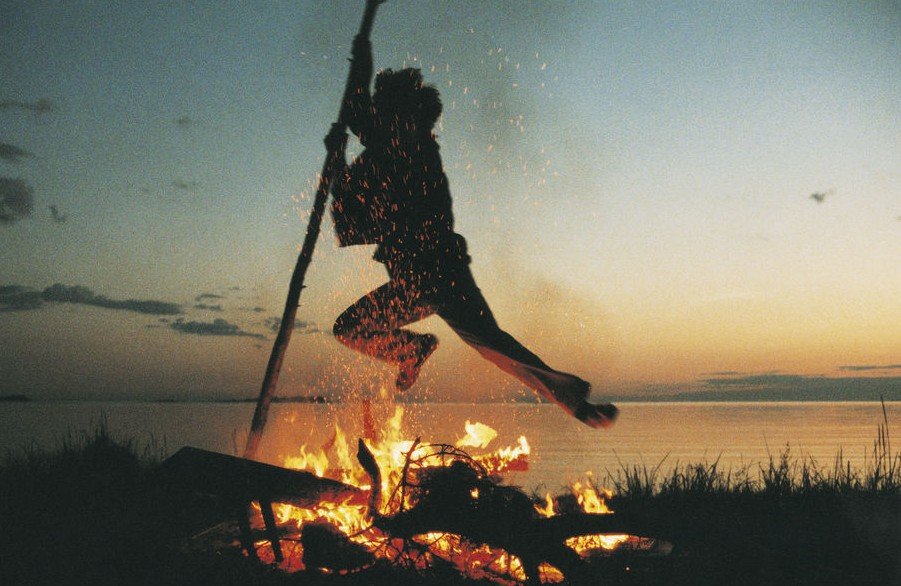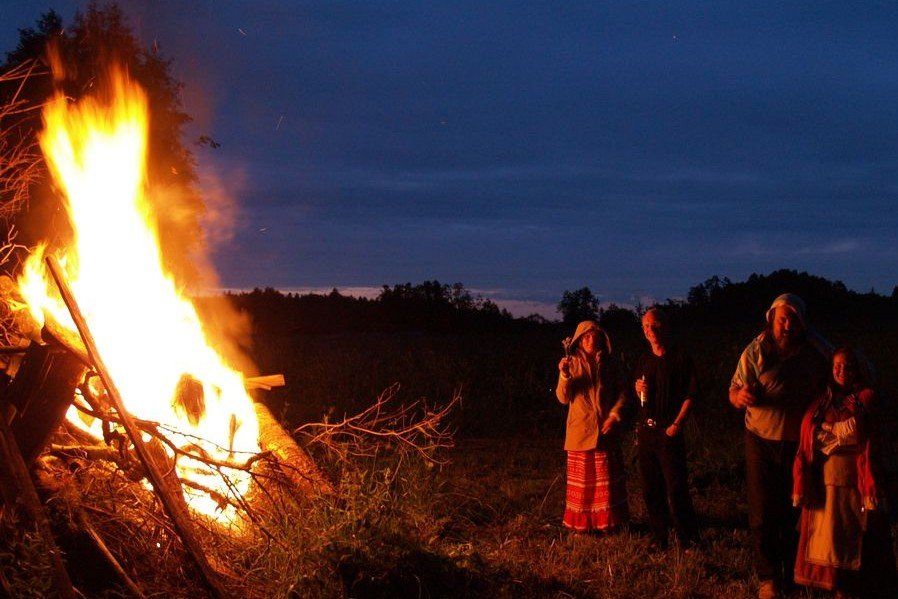Along with Christmas, jaaniõhtu (Midsummer Eve – 23 June) and jaanipäev (Midsummer Day, St John’s Day – 24 June) are the most important holidays in the Estonian calendar – people all over the country will gather with their families, or at larger events to celebrate with singing, dancing and lighting the bonfires, as Estonians have done for centuries.*
The short summers with short nights have a special significance for Estonians. Jaaniõhtu and jaanipäev follow the longest day of the year, 20-21 June, or the summer solstice, when night seems not to exist.
Following pagan rituals
Jaanipäev was celebrated long before the arrival of Christianity in Estonia, although the crusaders gave the day its name. The arrival of Christianity, however, did not put an end to the pagan beliefs and fertility rituals surrounding the holiday.
In 1578, Balthasar Rüssow, one of the most important Estonian chroniclers, wrote with some disgust in his Livonian Chronicle about Estonians who valued the feast more than going to church. He complained about those who went to church but did not enter, and instead spent their time lighting bonfires, drinking, dancing, singing and following pagan rituals.

After the War of Independence, when the Estonian forces defeated the German troops on 23 June 1919, the celebration of jaanipäev was merged with the celebration of Võidupüha (Victory Day). After this battle against Estonia’s traditional oppressors, jaaniõhtu and the traditional lighting of bonfires became associated with the ideals of independence and freedom.
Folkloric roots
Traditionally, jaanipäev marked a change in the agricultural year, especially the break between the end of spring sowing and the hard work of summer haymaking. As a result, some of the rituals associated with Midsummer Eve and Midsummer Day have very deep folkloric roots.
The most famous ritual is the lighting of the bonfire and jumping over it. This is seen as a way of ensuring prosperity and avoiding bad luck. Similarly, not lighting the fire means inviting the destruction of the house by fire. The fire also frightened away evil spirits, who avoided it at all costs, thus ensuring a good harvest. So the bigger the fire, the further the evil spirits stayed away.

Midsummer’s Eve is also associated with romance. In Estonian fairy tales and literature there is a story about two lovers, Koit (dawn) and Hämarik (dusk). According to the story, these two lovers meet only once a year and exchange the briefest of kisses on the shortest night of the year.
Earthbound lovers go into the forest to find the fern flower that is said to bloom only on this night. Also on this night, single people can follow a detailed set of instructions to see who they will marry.
Free spirit
Jaaniõhtu and jaanipäev were so dear to Estonians that even during the occupation, the Soviet Union made no attempt to stop the celebrations, even though the festivities represented the free spirit of the nation. Thus, jaanipäev always reminded Estonians of their past independence, despite Soviet attempts to eliminate such ideas.

The tradition before the Soviet occupation was for the Estonian president to light a fire on the morning of Victory Day. The tradition was restored after Estonia regained its independence in 1991. From this fire, the flame of independence was carried across the country to light the many bonfires. In 1992, jaanipäev became an official national holiday.

On these days, people all over the country gather with their families or at larger events to celebrate this important day by singing, dancing, drinking, eating and lighting bonfires, just as Estonians have done for centuries. Thousands of Estonian expats, however, usually celebrate a week or two in advance – and those who can, travel to Estonia for the real thing.
Alternative perspective
Lennart Meri, a legendary writer and film director, and the Estonian president from 1992-2001, provided another perspective on jaanipäev in his book, Hõbevalge (Silverwhite, 1976).
Meri suggests that jaanipäev traditions re-enact the fall of the Kaali meteorite in Saaremaa. The fall of the meteorite is also said to be the inspiration for Nordic and Baltic mythological stories about the sun falling to earth. This idea suggests that today’s bonfires and celebrations actually symbolise Estonia’s connection with its ancient past.
Read also: Why do Estonians celebrate midsummer on 23 June? and Fire, flower crowns and fern blossoms: Midsummer night in Estonia explained
* This article was originally published on 23 June 2013 and lightly edited on 23 June 2024.


Let’s hope it’s a dry one.
I have seen a couple of Jaanipeavs in Estonia, and I have to say its a amazing day and celebration! Few festival days anywhere in Europa can compare. Henrik (Norway)
https://www.youtube.com/watch?v=PNipSDt0BXw
https://www.youtube.com/watch?v=pOxO82CmP0I